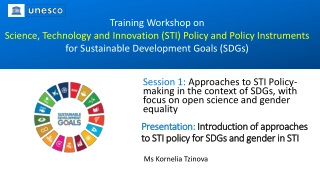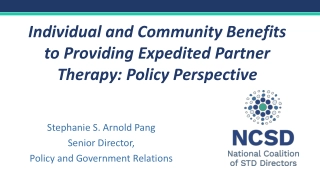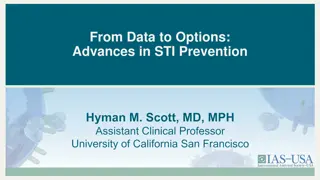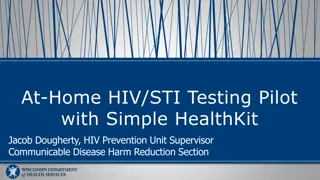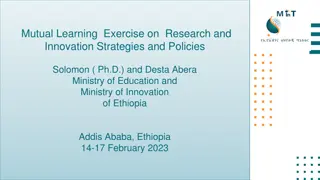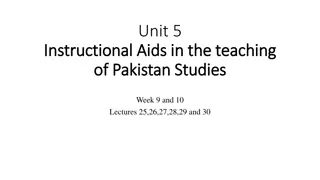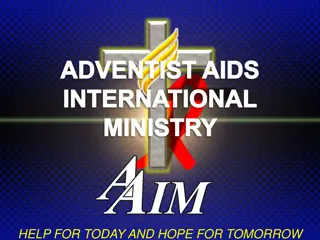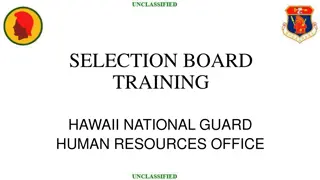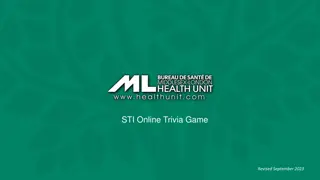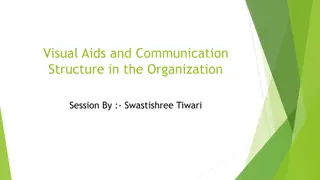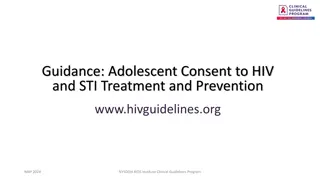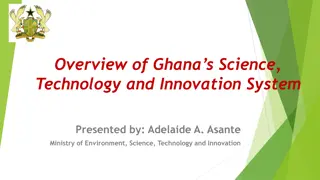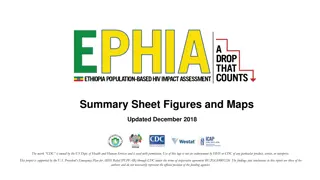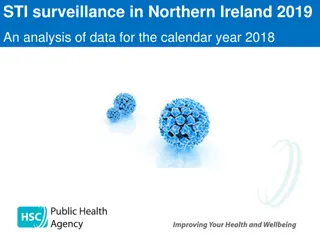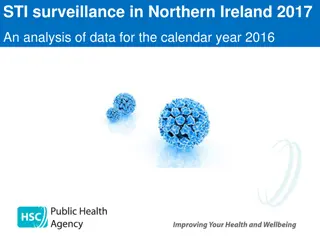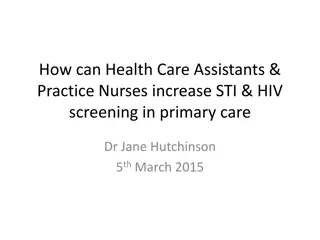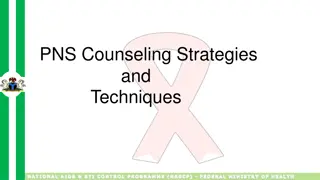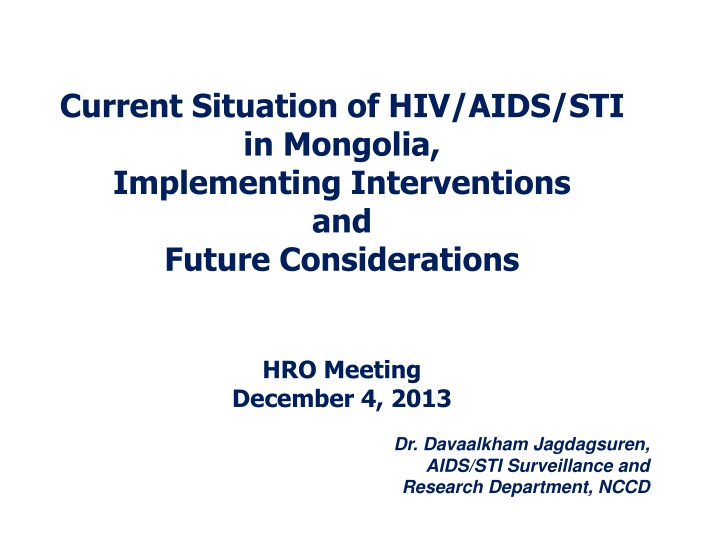
HIV/AIDS and STI Situation in Mongolia: Insights and Interventions
Discover the current status of HIV/AIDS and STIs in Mongolia, including statistics on new infections and deaths, interventions implemented, and future considerations discussed in a HRO meeting led by Dr. Davaalkham Jagdagsuren. Explore the gender distribution of cases, rates of common STIs, and the composition of infectious diseases reported in 2012. Gain insights into the global HIV/AIDS situation, with a focus on Mongolia's general and at-risk populations.
Uploaded on | 1 Views
Download Presentation

Please find below an Image/Link to download the presentation.
The content on the website is provided AS IS for your information and personal use only. It may not be sold, licensed, or shared on other websites without obtaining consent from the author. If you encounter any issues during the download, it is possible that the publisher has removed the file from their server.
You are allowed to download the files provided on this website for personal or commercial use, subject to the condition that they are used lawfully. All files are the property of their respective owners.
The content on the website is provided AS IS for your information and personal use only. It may not be sold, licensed, or shared on other websites without obtaining consent from the author.
E N D
Presentation Transcript
Current Situation of HIV/AIDS/STI in Mongolia, Implementing Interventions and Future Considerations HRO Meeting December 4, 2013 Dr. Davaalkham Jagdagsuren, AIDS/STI Surveillance and Research Department, NCCD
Cumulative number of HIV cases and deaths registered in Mongolia (1992-November 25, 2013 ) 30 160 new infections deaths cumulative 149 27 140 25 127 22 120 21 20 100 100 17 83 15 80 13 13 11 11 62 60 10 9 49 40 36 4 5 25 20 16 2 2 2 2 1 1 1 1 1 1 1 1 5 0 0 0 0 0 0 0 0 0 0 0 0 0 4 3 3 2 2 2 2 1 1 1 1 0 0 1993 1995 1997 1999 2001 2003 2005 2007 2009 2011 2013
Global HIV/AIDS situation Current situation in Mongolia: Among general population < 0.1% Among risk populations 7.5% (SGS 2011) Estimated number of people living with HIV (2011) 674* Global Report /UNAIDS/ *Spectrum/EPP 4.47 2011 *Spectrum/EPP 4.47 2011
Gender Distribution of HIV/AIDS cases Registered in Mongolia
Rate of 3 Most Commonly Occurring STIs: syphilis, gonorrhea and trichomoniasis (per 10,000 population, 1993-2012) 45 40 39.5 35 36.5 36.4 30 26 24.6 25 24.8 23.9 21.7 25.3 23.8 23.5 22.2 23.7 19.2 23.1 21 23 22.3 20.3 20 18.6 18.5 19.9 16.7 18.7 16.9 17.8 14.4 17.6 17.4 17.2 15 15 15.3 15 15 14.6 12.7 14.4 13.9 13.3 11.7 12.9 10 9.5 9.1 7.1 6.8 7.1 7.2 4.5 7 5 5.7 3.3 5.60 3.2 2 1.8 0 1993 1994 1995 1996 1997 1998 1999 2000 2001 2002 2003 2004 2005 2006 2007 2008 2009 2010 2011 2012 In recent years, a trend for increase in occurrence of STIs has been observed. A total of 14,490 cases of commonly occurring STIs were registered in 2012 which represents an increase of 1,046 cases compared to 2011. In particular, syphilis rate reached 17.8 per 10,000 population which is an increase by 2.5 from that reported last year.
Composition of Infectious Diseases Reported in 2012 Zoonotic infections 1.2% Blood borne infections 1.8% Other 5.6% STIs 33.5% Respiratory infections 36.5% Enteric infections 21.4% A total of 43,405 cases of 25 types of infectious diseases were reported in 2012. The three most commonly occurring STIs contributed 33.5% of all infectious diseases reported in the country 6
Incidence rate of HIV/AIDS/STIs By September 2013 Total 11005 cases of most commonly occurring STIs were reported, which means 37.6% of total reported cases of infectious diseases were syphilis, gonorrhea and trichomoniasis cases. Among them 33.8% are gonorrhea, 40.2% are syphilis, 25.9% are trichomoniasis cases. Compared to September 2012, the number of syphilis cases has increased by 974 cases and incidence rates per 10000 person in Gobisumber, Dornod, Bayankhongor, Khuvsgul, Sukhbaatar and Darkhan-Uul provinces are 1.4-7 times higher than the state average rate. Total 20 new cases of HIV infection were reported. HIV/AIDS related death cases 2.
Commonly Occurred 3 STIs By first 9 months of last 3 years
Number of Congenital Syphilis Cases Reported Nationwide 51 25 19 17 16 15 11 7 2006 2007 2008 2009 2010 2011 2012 2013 9 A trend for increase in the number of reported congenital syphilis cases has been observed in the last 3 years. Of the total of 25 cases reported in 2012, Dornogovi aimag reported 3, Orhon -4, Uvurkhangai-1, Uvs -1, Khentii-1, and Ulaanbaatar -15 cases.
Policy Documents Followed Nationwide 1. The Law on HIV/AIDS prevention Approved by the Parliament of Mongolia, December 2012. National strategic plan on HIV/AIDS and STI prevention/2010-2015/ Approved by Government resolution No. 43, 2010. Measures to implement National program to fight infectious diseases /2011-2015/ . Approved by Government resolution No. 108, 2011. HIV/AIDS/STI treatment and care guidelines . Approved by Health Ministerial order No. 429, 2009. All level health care institutions follow this guideline. Operational guidelines of voluntary counseling and testing centers for detection of HIV infection . Approved by Health Ministerial order No. 427, 2011. National strategy to prevent congenital syphilis Approved by Health Ministerial order No. 458, 2010. Guidelines for early detection and treatment of pregnant women with syphilis . Approved by Health Ministerial order No. 350, 2011.., etc. 2. 3. 4. 5. 6. /2011-2015/ . 7. 10
Monitoring and Evaluation of HIV/AIDS Prevention Activities 1. HIV/STI Second Generation Surveillance Survey every 2 years since 2002 2. Reproductive health survey 3. Child development survey, MICS 4. Progress report on the fight against HIV/AIDS and prevention measures , UNGASS 5. Increasing universal access to HIV/AIDS treatment and care .., etc.
National spending assessment on HIV/AIDS treatment, care and prevention (2010-2011) HIV/AIDS expenditures: 2010 5,243,014,112.62 2011 5,332,226,581.48
External midterm review of the National Strategic Plan on HIV/AIDS and STI prevention (2010-2015)
Activities Review of National Strategy Plan, reports, articles, work plans, policy and legal documents, and protocols Meetings with various key stake-holders working in HIV and related fields Government ministries: Health; Defense; Mining; Culture, Sport and Tourism; and Economic Development United Nations Agencies and major donors (e.g. ADB) Government implementation units: NCCD, National Human Rights Commission, General Agency for Border Protection, General Police Authority, City Health Department, a district health center, Health Science University of Mongolia Global Fund Project Coordination Unit NGOs working with key populations: e.g. Mongolian Red Cross Society, Focus, National AIDS Foundation, AIDS Society, MSM and sex worker CBOs/NGOs, and a private STI clinic. [The full list available in the report] Meeting and focus group discussions with representatives of men who have sex with men, sex workers, people living with HIV Media Global Fund portfolio manager and technical officer Field visit: Darkhan-Uul, Selenge and Orkhon provinces Selenge, Orkhon and Darkhan-Uul Provincial Health Departments Kuthul Inter-soum hospital in Selenge NGOs in Selenge and Orkhon
National Strategic Plan: 7 objectives 1. To reduce HIV vulnerability and risk among most-at-risk populations female sex workers (SWs), men who have sex with men (MSM), and injecting drug users (IDUs). 2. To reduce HIV vulnerability among the general population. 3. To improve the quality of life of people living with HIV. 4. To strengthen the organization, management, quality of, and access to health care services. 5. To strengthen a supportive legislative and public policy environment with adequate and sustainable resources available. 6. To strengthen the institutional capacity of coordinating bodies and implementing institutions. 7. To increase the availability and utilization of strategic information for an evidence-informed national response.
Findings of the Review Team Strong political commitment from the Government to effectively respond to HIV/AIDS and STIs. Significant contribution of donor support, particularly the Global Fund. Significant achievements on the 7 objectives of the NSP are observed by the Review Team, although some areas are not on track to reach the 2015 targets.
Significant issues as potential barriers to achieving the Programme Objectives The non-functioning of NCA The high prevalence of STI challenges the effectiveness of HIV transmission prevention efforts Limited access to HIV testing among MARPs Only small-scale community based VCT/STI services exist and these are reliant on donor funds There are insufficient strategic, evidence-based interventions employed to address the needs of the rapidly growing HIV epidemic amongst MSM and transgender people Individuals working in the mining and infrastructure sectors and in the surrounding communities have limited access to appropriate prevention activities, opportunities for timely testing, counseling People living with HIV and lesbian, gay, bi-sexual and transgender (LGBT) people still experience stigmatization and discrimination in the general community, and in some areas of health service delivery
Issues and Recommendations from Review Team Issues Recommendations There is an urgent need to re-establish the National AIDS Committee (NAC) to be in line with the revised AIDS Law The NAC should be re-established as soon as possible. It should be chaired by the Prime Minister or Deputy Prime Minister; and include representatives from key ministries and government agencies, civil society organizations including people living with HIV, selected UN agencies and donors. Essential working groups (such as monitoring and evaluation, technical working groups for different key populations) should also be established to support the NAC.
Issues and Recommendations from Review Team Issues Recommendations The growing HIV epidemic among MSM is not sufficiently addressed due to low coverage of interventions. Intervention with MSM should be expanded through increased peer out- reach with a strong linkage to HIV testing and counseling, treatment, STI, support and care services. Consider operational research on treatment as prevention among MSM. Improve STI case management focusing on improved diagnosis, risk assessment, contact tracing and condom promotion. Use STI data to monitor the sources of new infections as well as intensify the 100% condom use programme. Scale up the one stop service for syphilis control among pregnant women nationwide. Consider increasing number of STI clinics in all districts in the capital city to meet the needs of high volume of STI patients. The high prevalence of STI is a big challenge for effective HIV prevention. High congenital syphilis 28% syphilis prevalence in sex workers despite 100% CUP implemented nationwide.
Issues and Recommendations from Review Team Issues Recommendations There is an increasing concern of HIV risk and vulnerability among labor force in mining and infrastructure sectors, in surrounding communities as well as young people at high risk. There is concern on potential undetected HIV epidemic in injecting drug users and prisoners. Scale up workplace HIVAIDS and STI programme (particularly in mining industry, tourism, construction, military, etc.). Internet communication technologies and social media should be utilized to increase uptake of prevention, care, support and treatment services for young people at higher risk. Regular monitoring of injecting and other risky behaviours of drug users to avoid HIV outbreak in this population as reported in other low HIV prevalence countries. Mobilize resources to support a package of activities on HIV and STI prevention including awareness raising, risk reduction, and promotion of access to VCT for prisoners.
Issues and Recommendations from Review Team Issues Recommendations Key elements of comprehensive HIV counselling (such as partner disclosure, treatment adherence, psychosocial care) are not all implemented. Majority of HIV testing is conducted on people who are not significantly at risk of HIV infection. Develop simple tools to enhance communication of technical health information to clients from key populations (e.g. MSM) Revise existing VCT/STI curriculum; develop care, support and treatment counseling curriculum. Designate staff and provide training for treatment & care service counselors. Shift the focus of testing to key populations. Notable progress was observed in the areas of ART and TB/HIV clinical management. However, involvement of PLHIV is limited. Strengthen the involvement of PLHIV by: Developing curriculum and training PLHIV to serve as expert patients (or treatment buddies ) . Providing space for PLHIV in treatment facilities and explore on providing incentives and/or transportation cost.
Issues and Recommendations from Review Team Issues Forecasting, procurement and supply of essential commodity is weak. Ensure that the existing GF commodity management system is implemented by NCCD. Common single procurement and distribution system should be promoted. Conduct rapid audit of facility equipment and supply issues, and urgently provide essential commodities and equipment. Stigma and discrimination is a barrier to access to HIV/STI prevention, treatment and care. PLHIV and LGBT (lesbian, gay, bi- sexual and transgender) groups are still stigmatized and discriminated. Recommendations Provide technical assistance to develop capacity in forecasting, procurement and commodity management system. Conduct routine facility level patient satisfaction surveys. Establish a client complaint management system. Sensitivity and awareness training for health service personal regarding MSM, transgender and other key populations.
Issues and Recommendations from Review Team Issues Recommendations The revised AIDS Law is yet to be widely disseminated and implemented. Immediately disseminate the revised AIDS Law among all sectors. The implementation of the AIDS Law should be a priority agenda in the first National Committee on AIDS meeting. This will give stronger leadership direction of the AIDS response in the country. Increase domestic funding. At the same time, a mechanism to ensure the effectiveness and efficient use of existing resources should be in place. Strategic preparation for smooth transition that address the reduction of external resources. External resources for HIV/STI response is reducing due to status of middle income country.
Issues and Recommendations from Review Team Issues Recommendations Capacity of service providers and civil society organization is still weak in many areas. Review the current systems, structure, capacities and responsibility and actual functioning of NCCD, provincial and district facilities; and explore the opportunity of task shifting Carry out a needs-assessment survey of CSOs providing services to key populations to inform the capacity development programme and resource allocation for CSOs. Explore Government mechanism to fund CSOs to complement government services particularly for key populations. Consider establishing a national umbrella mechanism for CSOs that provide HIV/AIDS and STI services.
Issues and Recommendations from Review Team Issues Recommendations Information on coverage of essential services provided by NGOs to key populations is limited and not adequately used to guide programme improvement. Limited investigation and analysis of programme challenges based on collected information (e.g. despite high coverage of syphilis testing in pregnant women, high number of congenital syphilis is still reported). Capacity and funding to maintain surveillance programme is a challenge. Identify and establish a sustainable mechanism for NGOs working with KP to report to the government. Conduct an external evaluation of the STI surveillance system. Provide assistance to build the capacity of NCCD HIV/STI Surveillance unit and NGO staff for: Mapping of FSW and MSM venues Defining key data to be collected on NGOs interventions Data quality assurance HIV/STI risk assessment in prisons and in drug users Bio-behavioural surveys data analysis Triangulation of HIV and STI surveillance and routine programme and relevant laboratory data Comprehensive analysis and reporting on the HIV/STI programme
Issues and Recommendations from Review Team Issues Recommendations National management system for laboratory is not in place. Reorganize the structure of national STI reference laboratory to ensure staff responsible for routine clinical service and management of national HIV/STI laboratory system separately. Strengthen the management system of lab practice at all levels and the coordination between the national lab and local labs( including training, supervision and quality management for experimental operation, equipment, test kits, Instrument) Capacity of laboratory system and availability of services in local areas remain limited. Update the current guidelines , testing and QC algorithms to make recommendations based on the applicable detection technology and laboratory capacity (e.g. introduction rapid syphilis tests at local levels). Ensure appropriate instrument and equipment (e.g. RPR shakers, TPHA shakers , ELISA assays for HIV) are available in all laboratory facilities. Reorganize the space based on the PCR procedures in order to prevent contamination in NCCD. Quality control system for laboratory service is weak. Increase capacity for national quality control management of HIV/STI laboratories and reduce the number of the Syphilis positive samples for quarterly control to 10 % of the whole positive cases from level II hospital (currently 70-100%). Practical training on the standard operational procedures (SOP) and internal QC procedures and requirements for all level laboratories.
Future considerations To accelerate implementation of the amended AIDS law at all level Responsible organization: Ministry of Health To develop a cost estimated functional plan on implementing the recommendations of the Midterm Review of the National Strategic Plan on HIV/AIDS and STIs Prevention (2010-2015) by every level of governmental organizations. The plan should consider involvement of non-governmental, civil society organizations as well. To monitor implementation of this cost estimated functional plan. Responsible organization: Ministry of Health, National Center for Communicable Diseases All the stakeholders including governmental, non-governmental and civil society organizations should pay attention and mobilize resources for funding required to implement the cost estimated functional plan on implementing the recommendations of the Midterm Review of the National Strategic Plan on HIV/AIDS and STIs Prevention (2010-2015)

